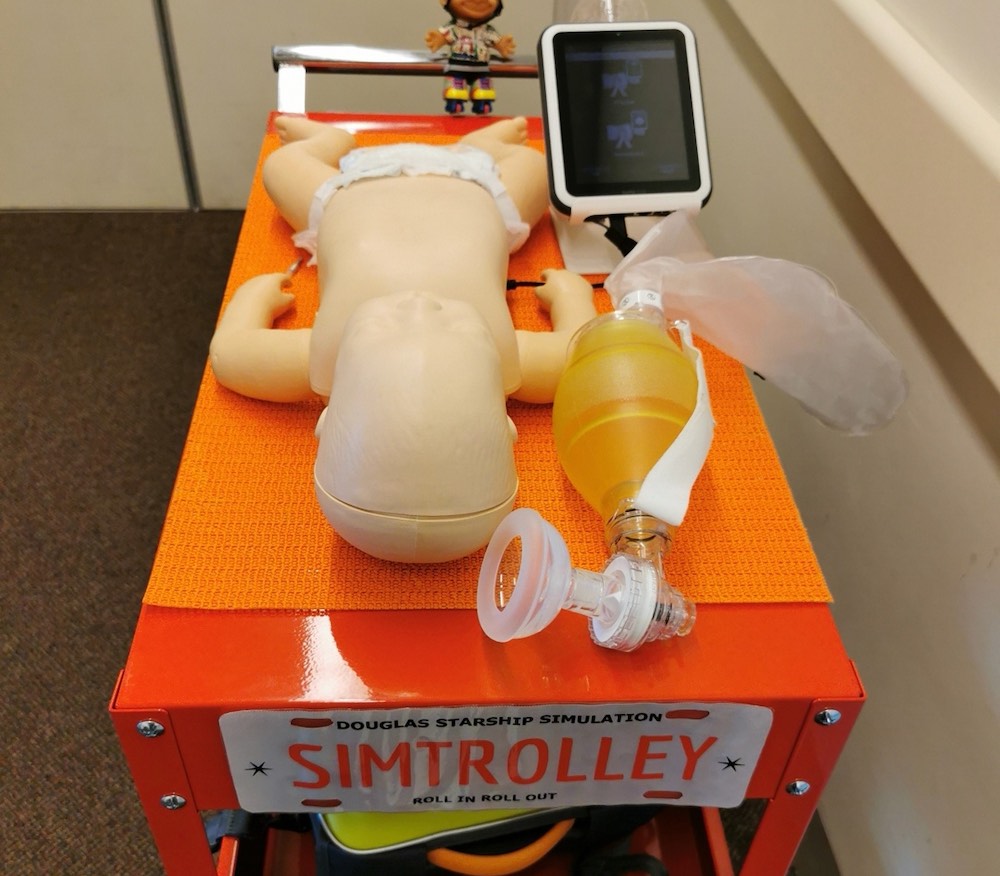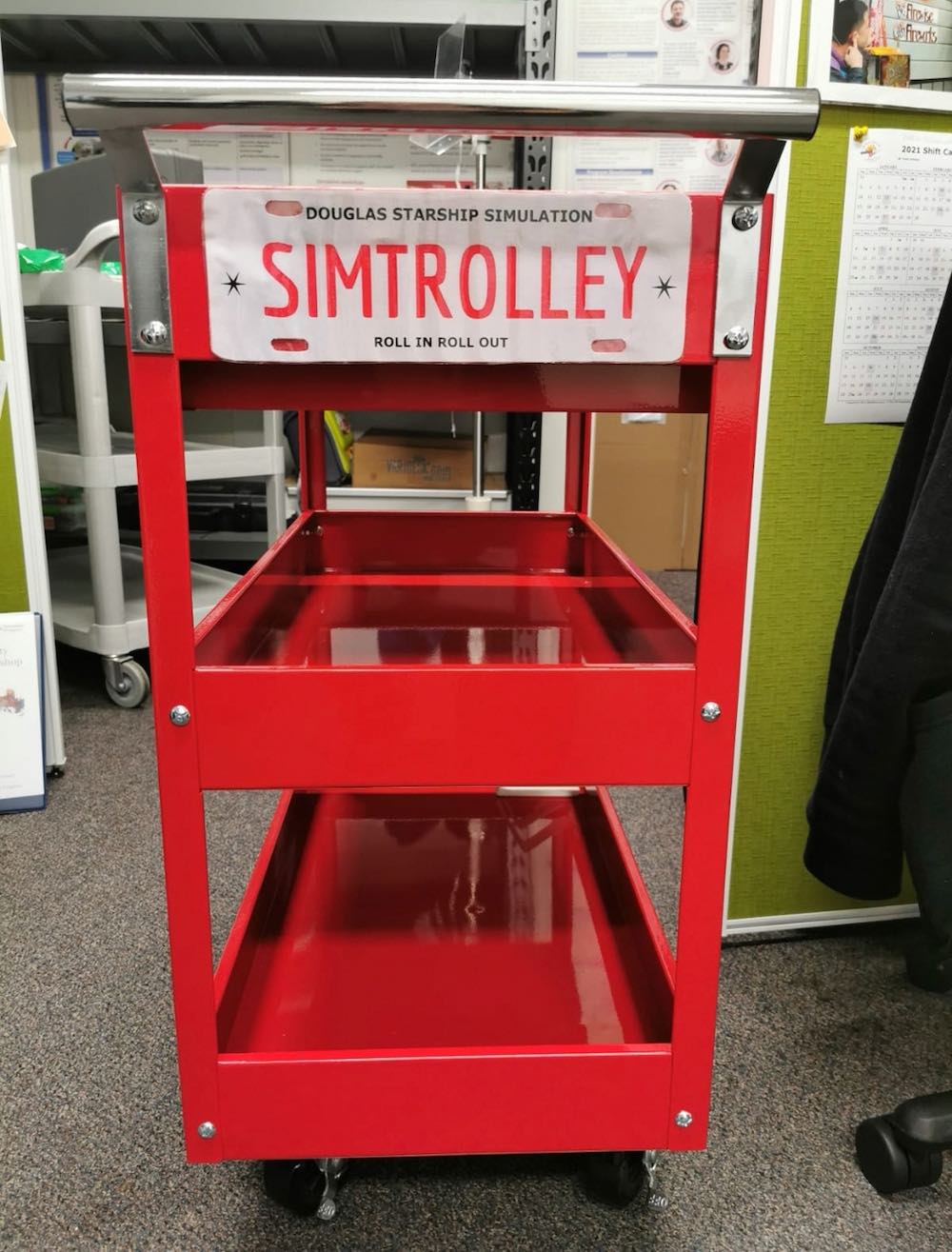How to Deliver Effective (But Low Cost) Healthcare Simulation with a Simple Hardware Store Trolley Cart
Designing a low-cost healthcare simulation program resource that is functional for both the organization and consumer of simulation-based education may seem unachievable or become overwhelming. Clinical healthcare simulation educators can get distracted by high fidelity and highly resource-dependant manikins and programs. When considering a simple healthcare simulation adjunct, the details can be overlooked due to the simplicity of the concept. However, just because the organization that performs clinical simulation is planning a simple simulation session doesn’t mean that the thought into learning objectives for participants should be overlooked or shied away from. This HealthySimulation.com article, written by Erin Carn-Bennett, shares how one organization found a lot of power in utilizing a low-cost hardware store trolley as an adjunct within the clinical simulation program and explores how the trolley may be able to be utilized in other simulation-based education programs.
Our clinical simulation program purchased a low-cost hardware store trolley within a flat pack and we constructed the trolley within the workplace for a few hundred dollars in New Zealand. For some areas of the world, simulationists could probably get something even more reasonably priced than this. We found that once built, the trolley had a slippery top and so we stuck some adhesive trip no more cord cover on the top layer of the trolley.
This bright orange adhesive stick-down mat is removable and wipeable should there be a need to clean up. The adhesive mat means that firstly the transported equipment stays on top of the trolley safely. There was no equipment rolling off and being dropped en route to training. The adhesive mat’s main function is to allow for the ability to place either task trainers or manikins on top of the trolley while participants are using them in clinical simulation.
Sponsored Content:
The main purpose was that the manikin or task trainer would stay locked in place for participant comfort and realism. Our clinical simulation program already had the cord cover mat for other uses. However, those purchasing one should know that the mat can also be used for other purposes such as covering electrical cords or lines during other clinical simulation-based training in any setting.
Our clinical simulation program would recommend going and trying out display trolleys in the retail space. This was to ensure that users are happy with steering capabilities and braking systems prior to purchasing. As healthcare simulation educators, we all know how frustrating a challenging steering trolley can be to move around organizations. This should be considered prior to purchase.
Considering the learning outcomes for participants attending a clinical simulation on a trolley is important. Educators must understand what clinical simulation zone of training their participants are attending and how they will be involved as a facilitator (Roussin & Weinstock, 2017). Here are ways in which we have used the low-cost hardware trolley within our program:
- Using a Laerdal QCPR baby with the sim pad attached on top of the trolley. The simpad sitting within a stand so participants can easily view the sim pad for direct feedback on their chest compressions and airway ventilations. The beauty of the low-cost trolley set is that learners can park this trolley anywhere for training to occur.
- Nurse’s stations, meeting rooms, corridors, and cupboards: If a person can fit, generally a small trolley can fit. Don’t let physical space be a barrier to getting trained in the basics. The trolley would also have the great capability as a just-in-time training feature for healthcare workers in critical care areas of the hospital.
- We find that the Laerdal QCPR baby is one of the most utilized manikins in our fleet despite being low fidelity. Two team members can work together to perform compressions and ventilations. We used this as a zone one training which means that we used a pause and discuss debriefing methodology.
- A coached style of training allows participants to practice working together as a team to manage compressions and ventilations. Especially in pediatric patients, the QCPR feedback allows participants to see how little volume of air is required to effectively ventilate a baby. Skill decay is an issue for those that work in pediatrics with skills that are high stakes and low frequency such as CPR.
- Making CPR and BLS training more accessible means that this can occur more frequently. This ensures that basic airway and compression skills that are essential in saving a child’s life are kept more current, and more easily for staff or students.
- For readers not in pediatrics wanting to utilize the trolley for this form of training, they could use a torso manikin to perform this training as well to capture learning needs for other age groups of patients.
- Defibrillator Training: Either deliver isolated defibrillator training or also add this training to the above CPR-based pediatric training. Again in pediatrics, the defibrillator is not a piece of equipment that is used frequently and so lessening skill decay is of utmost importance.
- Using three staff members in zone one team-based training is incredibly effective for them to be able to practice basic life support, closed-loop communication, and allocation of roles in an emergency.
- In the zone one coached style of training participants gain a lot of confidence in a short space of time due to constant revision of their technique. Being coached in this way allows them to practice until reaching mastery in a safe setting.
- Intubation Head Station: We placed a manikin head that was able to be intubated on top of the trolley and participants were able to practice intubation in a zone one setting using a pause and discuss methodology.
- This trolley could also be used for task trainers for example intravenous or lumbar puncture trainers. The trolley could also be used as a transportable moulage station.
Sponsored Content:
Not only does the trolley make a clinical simulation training program for zone one simulations more accessible and adaptable but is also for little to no cost. This could be incredibly helpful for those simulation educators working within a low-resource setting that are needing some adaptability to their program.
We found that a zone one healthcare simulation curriculum is best suited to the needs of the low-cost trolley. However, if someone is working in a setting where beds and space are a barrier to them delivering zone two team training (plus/delta debrief) healthcare simulation don’t let their mind think that this is the only utilization of this trolley. The trolley could certainly be rolled into a clinical environment and used in this manner as a patient bed for a smaller manikin with some consideration to how to effectively deliver this training.
The trolley also has handy drawers for someone to put additional equipment into for effective training such as oropharyngeal airways, bag valve masks, suction catheters, oxygen masks, and also paperwork such as sign-off and marking sheets. Don’t forget to set the scene of a safe simulation by making participants feel psychologically safe. Ensure that they are aware of what they will be practicing and how the facilitator will be involved. We would love to hear from those considering using something similar to this across their healthcare simulation training programs!
Learn More About Healthcare Simulation Programs
Reference:
Roussin CJ, Weinstock P. SimZones: An Organizational Innovation for Simulation Programs and Centers. Acad Med. 2017 Aug;92(8):1114-1120. doi: 10.1097/ACM.0000000000001746. PMID: 28562455.
Erin Carn-Bennett is a Simulation Nurse Educator for the Douglas Starship Simulation Programme in Auckland, New Zealand. Carn-Bennett has a Master of Nursing and has an extensive nursing career within pediatric emergency and also nursing management. She is passionate about debriefing and all psychologically safe simulation delivery. Carn-Bennett is a member of the IPSS board of directors. Carn-Bennett is the lead host of the podcast Sim Nurse NZ and co-host of IPSS The Podcast. Erin is the Nursing Director of the company Med Sim Solutions.
Sponsored Content:























